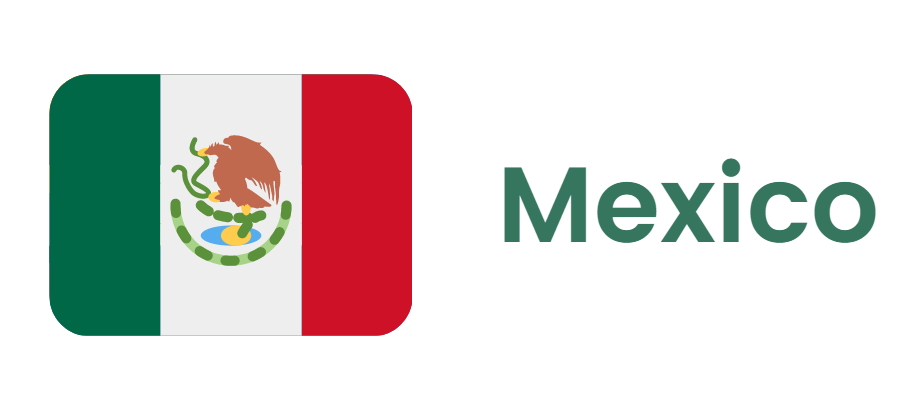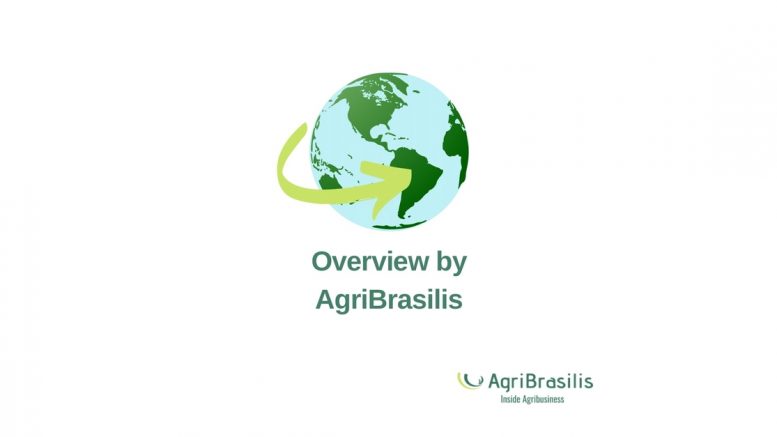Agro exports grew 38% in September, reaching a record of US$ 14 billion in Brazil
Projections for the 2022/23 wheat harvest, hit by the drought, continue to decline. Expected 16 million tonnes, 500 thousand below the previous forecast. Soybean farmers sold 69.8% of the 2021/22 harvest. Between September 29th and October 5th, 375,000 tonnes of soybeans were sold, a decrease from the 1.7 million of the previous week, given that the government ended the preferential exchange rate mechanism for soybean exporters at the end of September. (Rosario Cereal Exchange)
Area affected by drought exceeded 140 million hectares. 12.4 million cattle heads are at risk because of the effects of lack of rain and frost on pastures. (National Directorate of Agricultural Risk and Emergency)
Startup Silohub and Algoritmo, a web platform specialized in agricultural management systems, form a partnership to digitilize transactions for 30,000 farmers and more than 100 warehouses and distributors. (Silohub)
Women manage 20% of the country’s farms, mainly in areas with less than five hectares. Female participation in farm management stands out mainly in the provinces of Jujuy (42%), Santiago del Estero (29%), Salta and Tierra del Fuego (28% respectively) and Catamarca. (2.3%). (National Agricultural Census)
Bioceres announces that HB4 transgenic wheat sales reached US$ 12.4 million in the fourth fiscal quarter of 2022, representing an increase of 94% compared to 2021. Total sales in the period showed strong growth compared to the previous quarter, with an expansion of 44% , totaling US$ 104.1 million. (Bioceres)
![]()
Critical alert for the risk of incidence of apple scab, a disease caused by the fungus Venturia inaequalis, in the South region because of temperature and humidity conditions. “After the beginning of sprouting, most orchards are in flowering, with new tissues and the presence of inoculum of apple scab indicated in the spore collectors. The scenario is highly favorable to spread the fungus Ventura inaequalis, that causes the disease”, says agronomist José de Freitas, from the market development area of Sipcam Nichino Brasil. (Sipcam Nichino)
Agribusiness production continues to recover. The Agroindustrial Production Index calculated by the Center for Studies in Agribusiness at Getúlio Vargas Foundation increased once again in August, growing in the first eight months of 2022. “The good signs of agribusiness recovery are possibly reflecting the heating up of the domestic market and some relieving production costs, whether because of fuel and electricity, or because of the accommodation of the price of non-industrial raw materials at lower levels”, says the analysts from FGV Agro. In the area of inputs, increase was determined by the significant rise of 70.2% registered in the production of pesticides and household disinfectants. (FGV Agro)
BrasilAgro anticipates soybean planting. Company’s expectation is that weather conditions will be better during the 2022/23 harvest. “All forecasts indicate that La Niña should lose strength, allowing a rain regime closer to normal, favoring, mainly, better results in the off-season”, said the director of operations of BrasilAgro, Wender Vinhadelli. (BrasilAgro)
Civil and Federal Police and Military Brigade investigate soybean smuggling scheme on the border of the State of Rio Grande do Sul with Argentina. According to the police, criminals use a farmer’s receipt from the state to defraud illegal merchandise. On the Argentine side of the border, soybean are loaded onto boats and the crossing is carried out along the Uruguay River until arriving in Brazil, in Tiradentes do Sul, State of Rio Grande do Sul. Several illegal ports are open on the banks of the rivers to guarantee smuggling. (Federal Police)
Juçaí, a company in the organic assaí segment, invested approximately US$ 3.79 million in a factory in the city of Penedo, State of Rio de Janeiro. Investment aims to increase the company’s operations in the foreign market, exporting to Chile and Canada. The new factory will increase production capacity by five times. (Juçaí)
Latin American economies have responded quickly to the increase in prices, but will continue to struggle with high inflation for some time to come. The IMF raised its forecasts for inflation in Brazil, Chile, Colombia, Mexico and Peru, whose annual average rose to 7.8% this year and 4.9% next year. Specifically for Brazil, the indicator should be situated at 6% and 4.7%, respectively. (IMF)
MAPA opened subscriptions for selec
Agro exports grew 38% in September, reaching a record of US$ 14 billion. (Ministry of Agriculture)
Corn, soybean and bean farmers in the State of Paraná suffer from soil erosion caused by excessive rainfall in recent weeks. Heavy rainfall and flooding caused surface runoff. This carried away the fertilizers applied to the newly sowed seeds. (Department of Rural Economy – PR)

![]()
Country plans to change water use strategy, avoiding the use of large-scale reservoirs and prioritizing small-scale ones and local councils that manage a specific watershed or lake. The objective is to mitigate the effects of the drought, that has lasted more than a decade. Regarding the reuse of treated wastewater for agriculture, Minagri’s regional secretary, Nathalie Joignant, highlighted that the enactment of the grey water law, approved in 2018, is necessary, but it is still awaiting regulation by the Ministry of Health. (Ministry of Agriculture; Ministry of Public Works)
Best prices for selling cherries occur at the beginning of the season, between October and November, when there is a greater demand because of the Chinese New Year. Farmers bet on early varieties for varietal replacement, that should increase production at the beginning of the seasons in the coming years. Maule and O’Higgins regions are the main productive areas, representing 80% of national production. ”Both regions have a very relevant participation in the beginning of the harvest, that goes from weeks 47 to 52. The possibilities for a profitable business are at the beginning of the season…”, according to Walter Masman, a specialist in cherry cultivation. In the last season, 2.5 million boxes of early-variety cherries arrived in China, equivalent to only 3.5% of the total. It is estimated that by 2026 the average per season will reach 9 million boxes. (Redagrícola)

Yam cultivation grows in the Colombian Caribbean, making the country one of the 10 largest exporters in the world, exporting approximately US$ 7 million in 2021. Production increase has been limited by seed costs, that can represent up to 30% of production costs. Most of the cultivation is carried out with seeds obtained from the leftovers of the previous harvest. The Colombian Agricultural Research Corporation entered into a partnership with the Panamanian Agricultural Innovation Institute to exchange information on technologies developed by each country for the production of quality yam seeds. (Agrosavia; Idiap)

The country has productive potential to achieve self-sufficiency in cocoa through the monitoring of public goods and services and innovations in plant breeding, according to the Secretariat of Agriculture and Rural Development. There are 17 varieties registered in the National Catalog of Vegetable Varieties. National production meets only 44% of demand, with a per capita consumption of 0.5 kg. (Secretary of Agriculture)
Jalisco’s livestock sector was highly impacted by the increases of grain prices, according to Roberto Velasco Antillón, president of the Jalisco Regional Livestock Union. Cattle ranchers recorded increases of up to 100% of input prices, but did not fully transfered the increases to the consumer. (Jalisco Regional Livestock Union)
National Agricultural Health, Safety and Quality Service confirmed in its laboratories the first case of highly pathogenic avian influenza AH5N1, a strain of the virus that has caused serious outbreaks in Europe, the USA and Canada. Virus was identified in a gyrfalcon (Falco rusticolus), that fed on game birds in the Lerma River basin. (Senasica)
Expected national production of 27 million seedlings of cempasúchil, a flower that symbolizes the Day of the Dead. Among these, five million were produced in the city of Xochimilco. Main producing regions are Ciudad de México, Puebla, Tlaxcala, Hidalgo and San Luis Potosí. (Secretary of Agriculture)

![]()
In October, there will be a debate about two projects within the Agriculture Committee of the Chamber of Deputies that propose suspending the obligation to pay royalties for GMO events in soybeans and extending the maturity of obligations derived from grain delivery contracts for the 2021/22 harvest. Both projects, presented by deputy Colym Soroka, defend the need to apply extraordinary measures in the face of the soybean crop failure in 2021/22. (Agriculture and Livestock Commission)
![]()
Peru leads world increases of blueberry yields, with an average of 19,205 kg/ha. This represents a considerable increase when compared to the 2018 average of 13,501 kg/ha. The global increase of blueberry production is caused by 40% higher yields in tonnes/hectare and 60% due to the increase in planted area. Global production could increase from the current 1.8 million tonnes to 3 million in 2026-2027. (International Blueberry Organization)
Low international prices have caused a 10% drop in avocado exports value since the beginning of the year. The drop occurred despite the increase of shipped volumes between January and September. Peruvian exporters received an average of US$ 1.59/kg, the lowest value recorded in the past four years. Because of the global logistical crisis, many countries have chosen to prioritize the import of products from nearby sources. In the case of the European market, large importers such as Holland and Spain gave more room to nearby producers, such as Israel, Slovenia and Morocco. (Fresh Fruit)
Identified 139 unique varieties of Peruvian cocoa in the Amazon. Studies carried out by the Research Institute for Sustainable Development of Ceja de Selva, of the National University Toribio Rodríguez de Mendoza, identified unique cocoa varieties called “Peru Uniques” in three provinces of the department of Amazonas. The region already has a denomination of origin “fine aroma cocoa”, based on sensory quality and yields. (INDES-CES)

MORE ABOUT AGRIBUSINESS:

